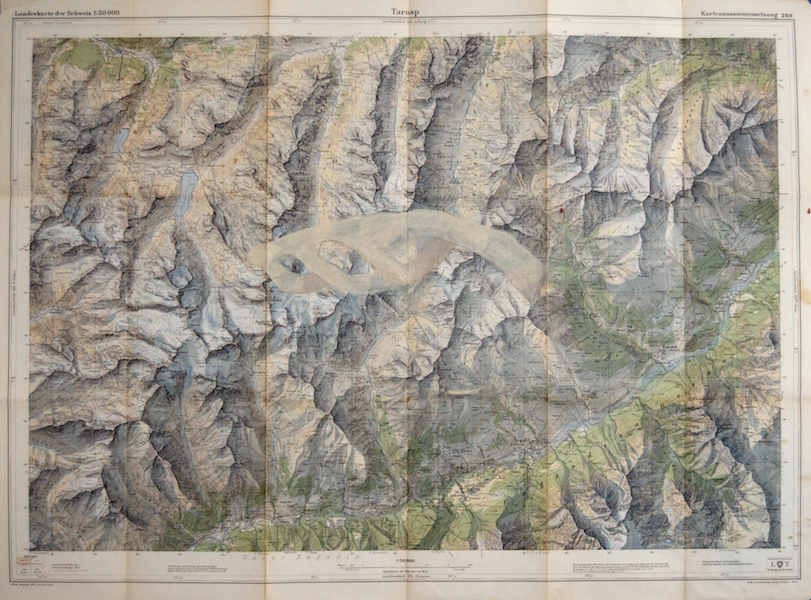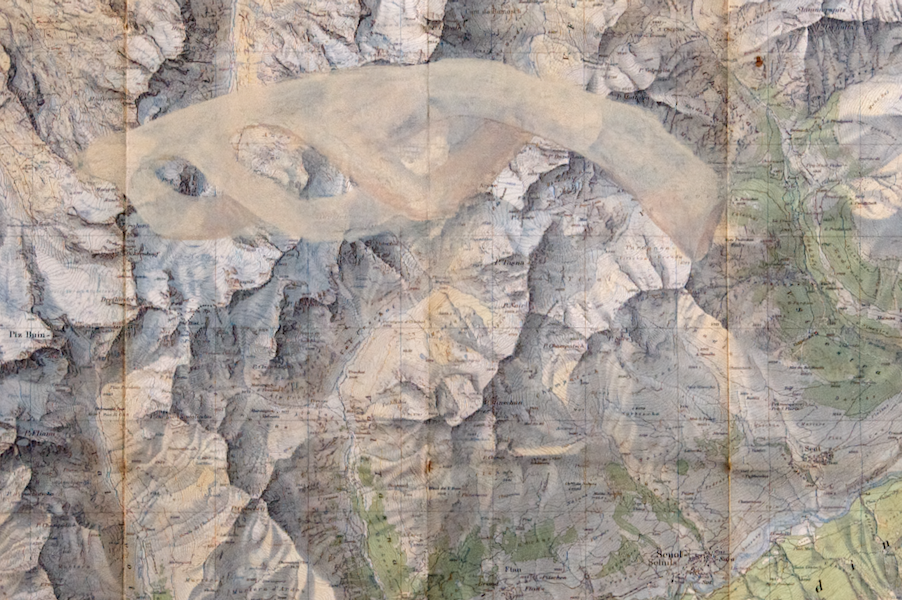maps (2011)
Paintings or prints on maps. Gouache or ink on paper.
Relating human traces and primitive art.
Humans have always left traces of their activities in the world; sometimes deliberately, sometimes accidentally. Maps represent a deliberate effort to depict the world with the purpose of situating ourselves in it. As a consequence, they capture the story of human activity in a given place: Maps contain human traces, just as the terrain they designate. But there is another human trait implicitly embedded in maps: aesthetics. In that sense, they fulfill their utilitarian purpose and at the same time they preserve the very essence of the human mind, emotional in nature.
How much of the aesthetic experience comes from the way our mind works, and how much from the inherent properties of our surroundings? Hidden in the terrain features depicted in maps, is the essence of their creators: Our shaping of the world (including our aesthetic choices) is determined by the nature of our bodies. Some of the patterns found in these maps render body- or face-like figures, when perceived by a human mind. The intention was to extract them and reintroduce them on top of the original picture, permanently altering the way in which the map's story can be read.

Whale on Tarasp (2011)
gouache painting on 20th century map, 80 x 100 cm

Whale on Tarasp - detail (2011)
gouache painting on 20th century map, 80 x 100 cm

Human traces - Läufelfingen (2011)
ink print (linoleum carving) on early 20th century map, 40 x 60 cm

Human traces - Liestal (2011)
ink print (linoleum carving) on early 20th century map, 40 x 60 cm